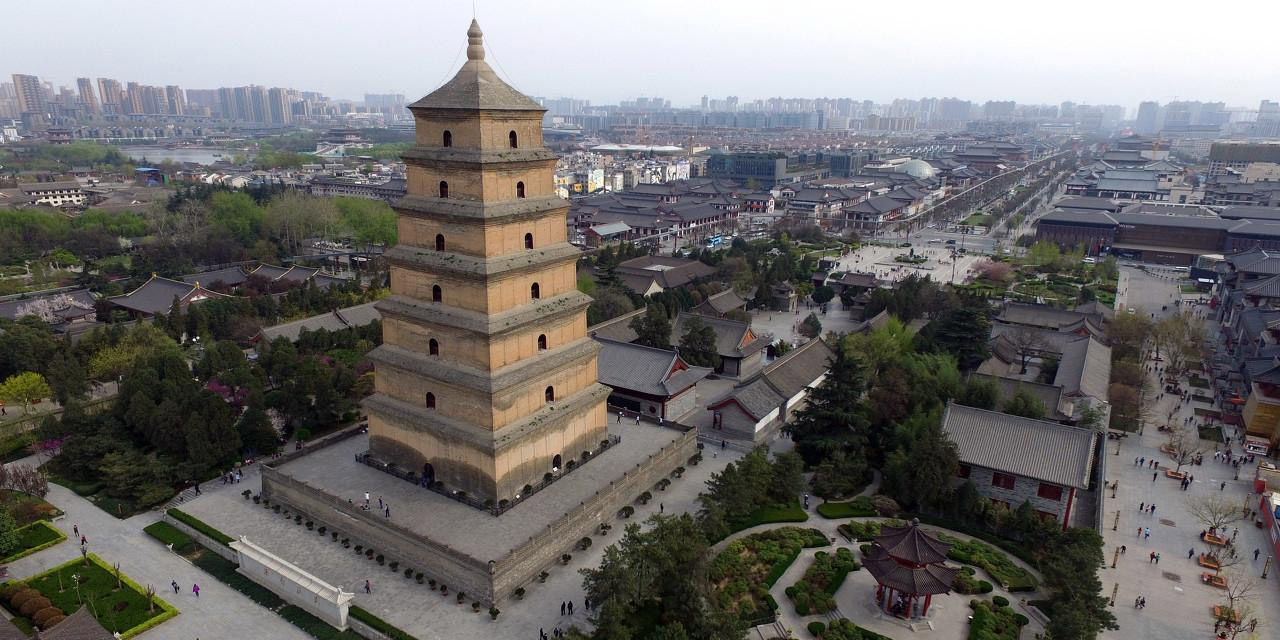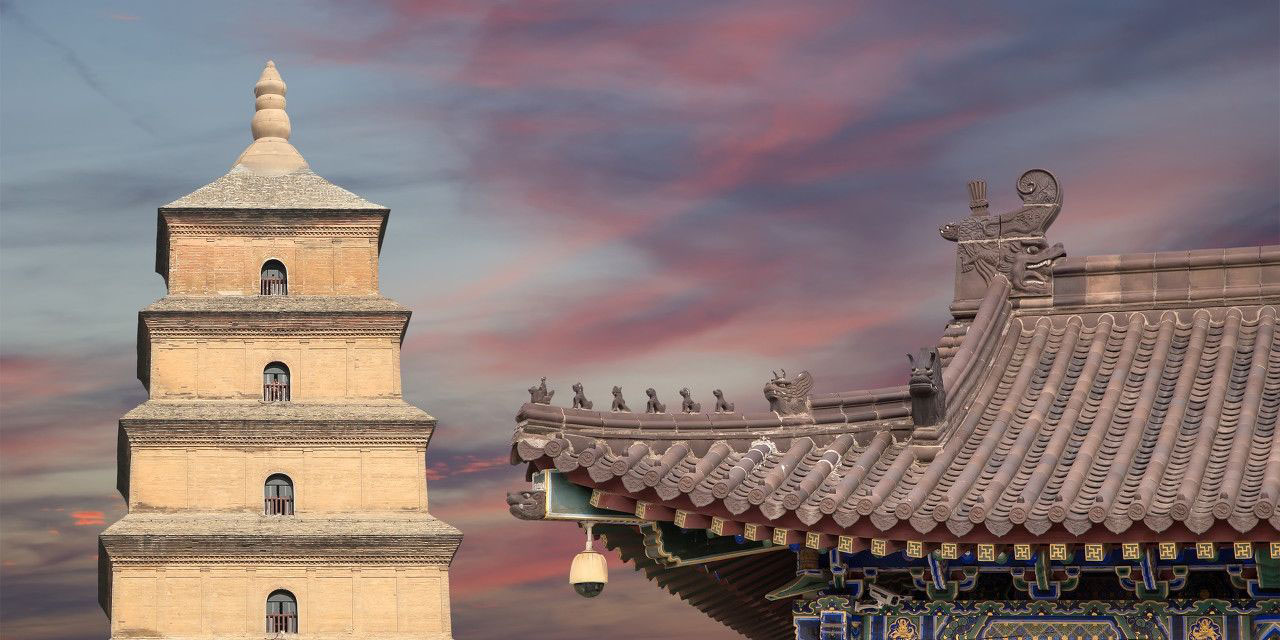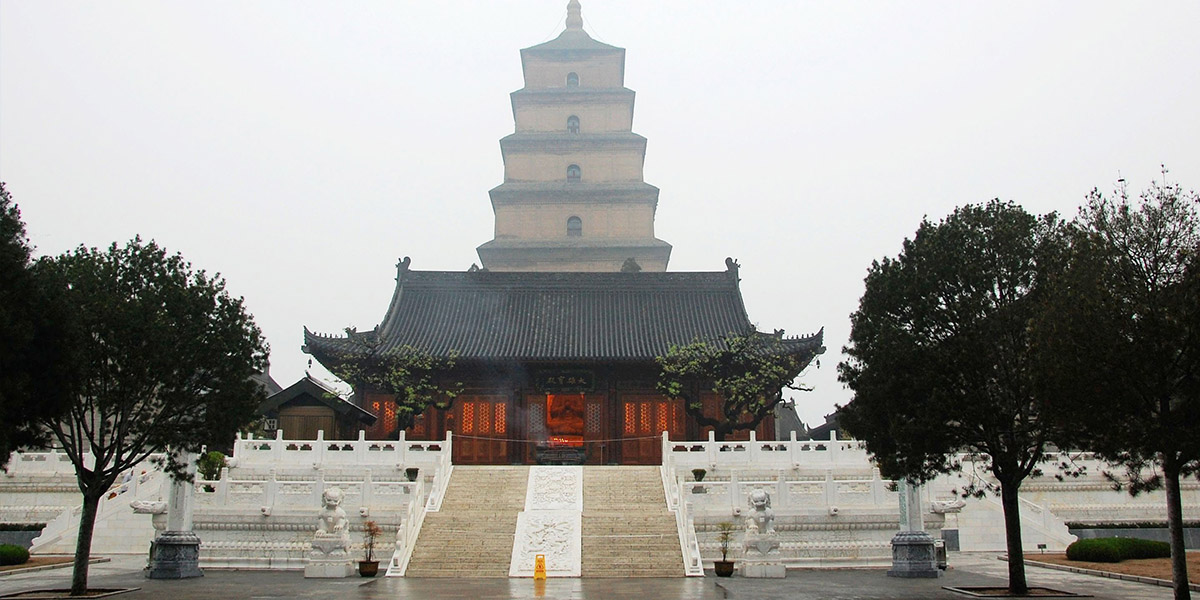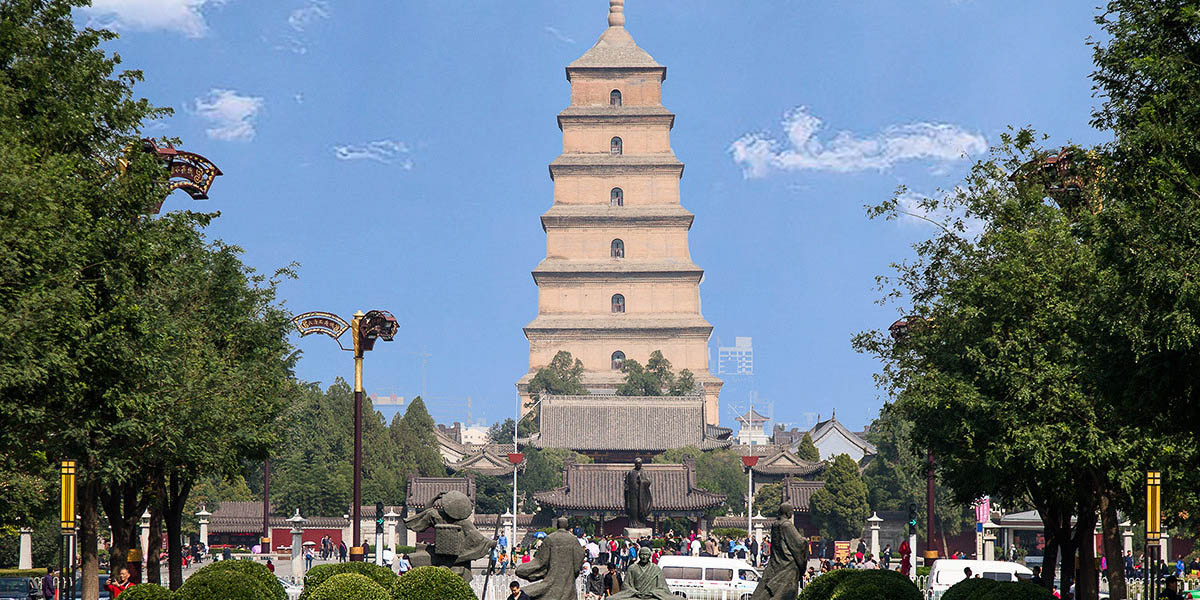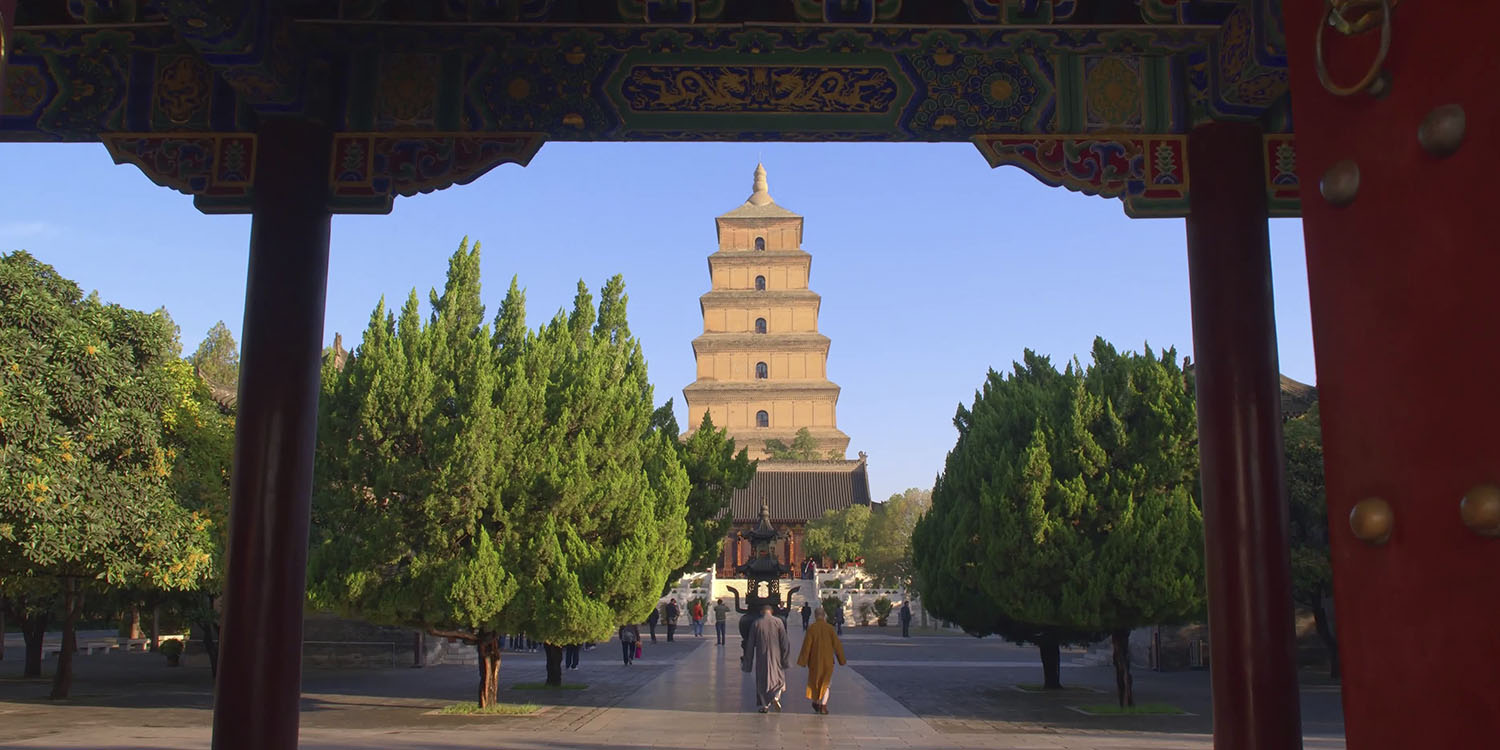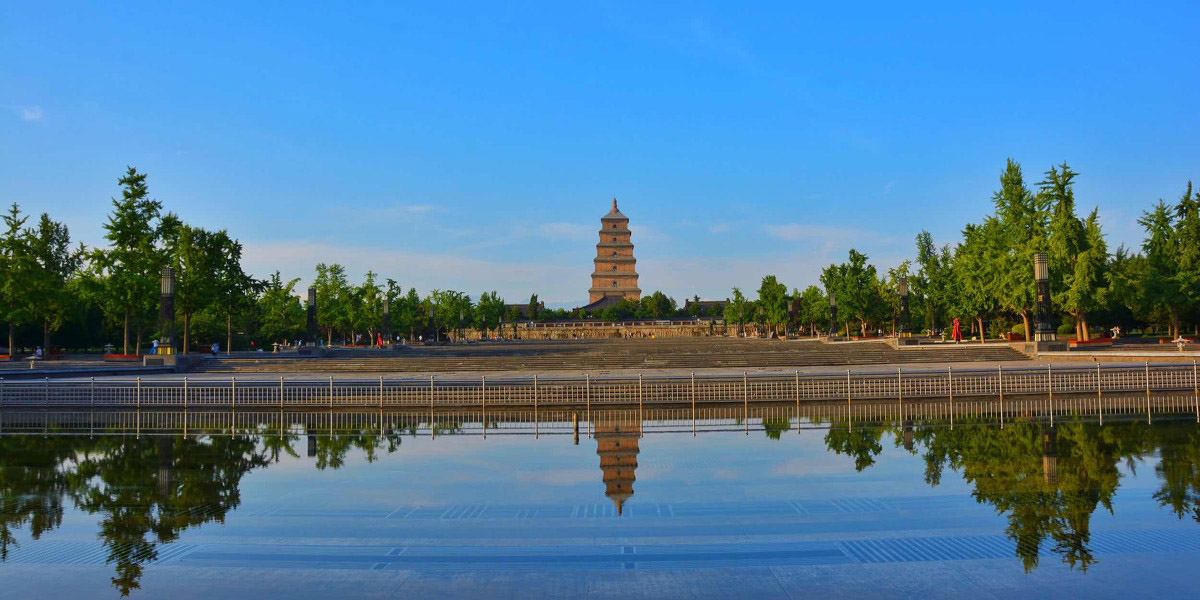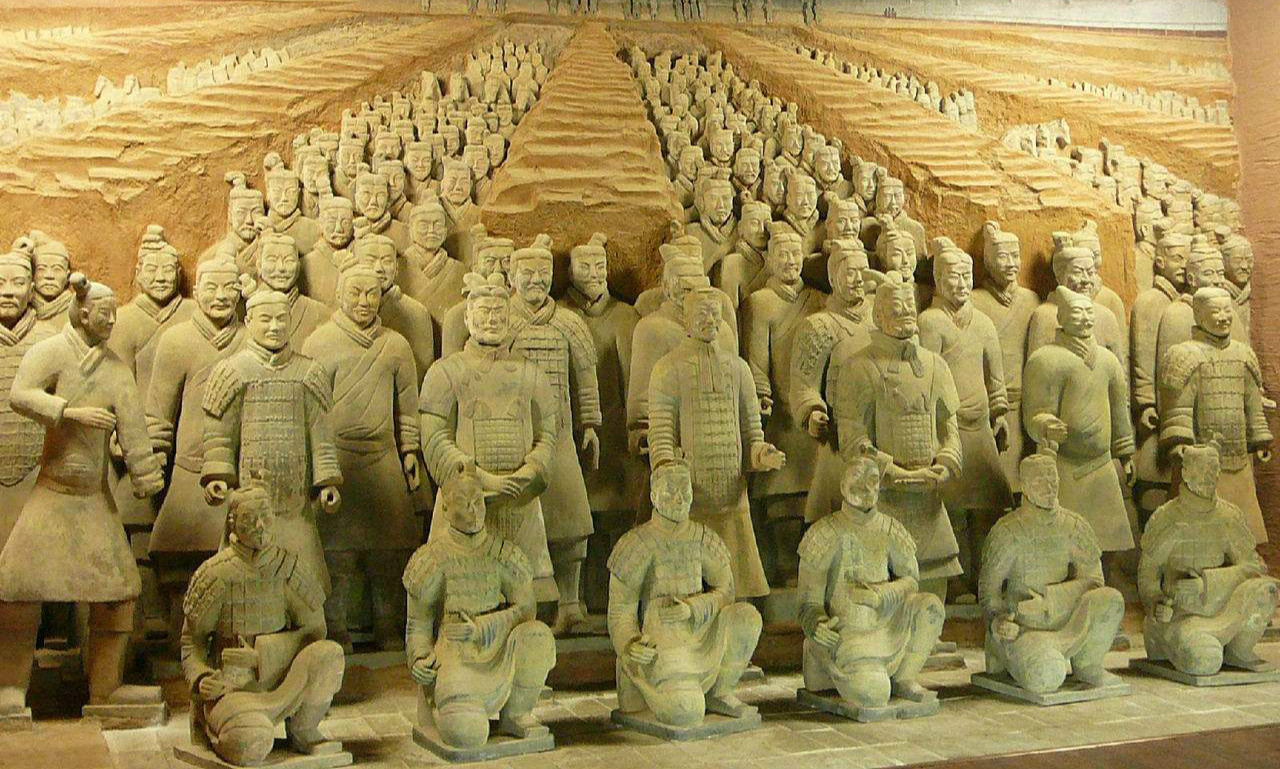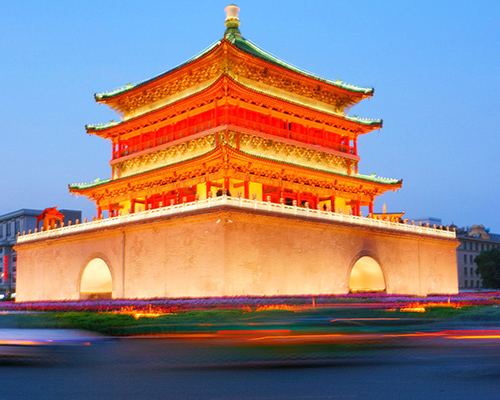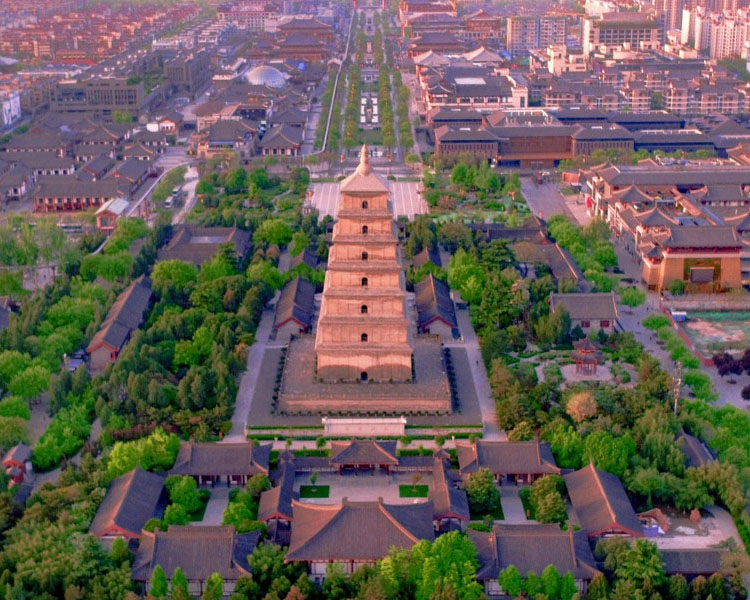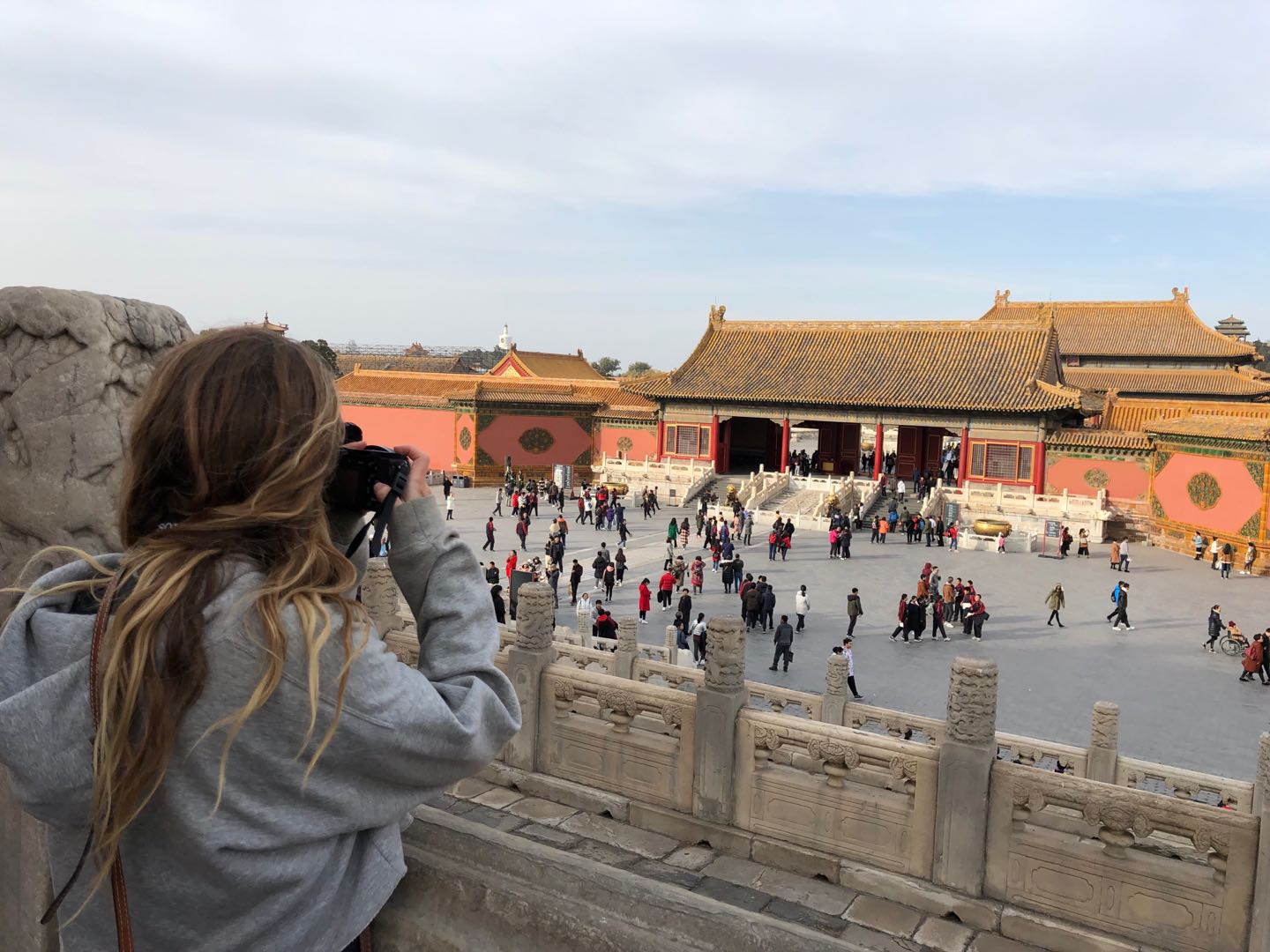Tour Code : C1782
Type : Historic sites
City / Province : Xian
Built in : 652
Big Wild Goose Pagoda
As the symbol of the old-line Xian, Big Wild Goose Pagoda is a well-preserved ancient building and a holy place for Buddhists. It is located in the southern suburb of Xian City, about 4 kilometers from the downtown of the city. Standing in theCi'en Temple complex, it attracts numerous visitors for its fame in the Buddhist religion, with its simple but appealing style of construction, and its new square in front of the temple. It is rated as a National Key Cultural Relic Preserve as well as an AAAA Tourist Attraction.
This attraction can be divided into three parts: the Big Wild Goose Pagoda, theCi'en Temple, and the North Square of Big Wild Goose Pagoda.
Originally built in 652 during the reign of Emperor Gaozong of the Tang Dynasty (618-907), Big Wild Goose Pagoda functioned to collect Buddhist materials that were taken from India by the hierarch Xuanzang.
started off from Chang'an (the ancient Xian), along the Silk Road and through deserts, finally arriving in India, the cradle of Buddhism. Enduring 17 years and traversing 100 countries, he obtained Buddha figures, 657 kinds of sutras, and several Buddha relics. Having gotten the permission of Emperor Gaozong (628-683), Xuanzang, as the first abbot of, supervised the building of a pagoda inside it. With the support of royalty, he asked 50 hierarchs into the temple to translate Sanskrit into Chinese, totaling 1,335 volumes, which heralded a new era in the history of translation. Based on the journey to India, he also wrote a book entitled 'Pilgrimage to the West' in the Tang Dynasty, to which scholars attached great importance.
First built to a height of 60 meters with five stories, it is now 64.5 meters high with an additional two stories. Externally it looks like a square cone, simple but grand and it is a masterpiece of Buddhist construction. Built of brick, its structure is very firm. Inside the pagoda, stairs twist up so that visitors can climb and overlook the panorama of Xian City from the arch-shaped doors on four sides of each storey. On the walls are engraved fine statues of Buddha by the renowned artist Yan Liben of the Tang Dynasty. Steles by noted calligraphers also grace the pagoda.
As for the reason why it is called Big Wild Goose Pagoda, there is a legend. According to ancient stories of Buddhists, there were two branches,one of which eating meat was not a taboo. One day, they couldn't find meat to buy. Upon seeing a group of big wild geese flying by, a monk said to himself: 'Today we have no meat. I hope the merciful Bodhisattva will give us some.' At that very moment, the leading wild goose broke its wings and fell to the ground. All the monks were startled and believed that Bodhisattva showed his spirit to order them to be more pious. They established a pagoda where the wild goose fell and stopped eating meat. Hence it got the name 'Big Wild Goose Pagoda'.
Ci'en Temple is the home of Big Wild Goose Pagoda. In 648, to commemorate the dead virtuous queen, royalty ordered the building of a temple named 'Ci'en' (Mercy and Kindness), for which the status and scale far exceeded all others. Today, with an area of 32,314 square meters, one seventh of the original area, it still retains its grandeur.
Before the temple, there stands a statue of hierarch Xuanzang, the meritorious hierarch. Walking on and across a small bridge, visitors will see the gates of the temple. With guarding lions, the temple seems statelylions which were said to function as talismans.
Entering the temple you will see two buildings-Bell Tower in the east andin the west. Inside the Bell Tower hangs an iron bell 15 tons (14.76 gross tons) in weight. It was molded in 1548 in the Ming Dynasty (1368-1644). Along the central axis are arranged the Hall of Mahavira, Sermon Hall, Big Wild Goose Pagoda, and the Hall of Xuanzang Sanzang. In the Hall of Mahavira are three carved statues of Sakyamuni, and 18as well as Xuanzang. The Sermon Hall is where Buddhist disciples would listen to a sermon. A bronze statue of Amitabha is dedicated and a Buddha statue is collected by Xuanzang as oblation. The Hall of Xuanzang Sanzang is north of. In this hall are Xuanzang's relic and a bronze statue of a seated Xuanzang. The inner wall is chiseled with murals depicting this hierarch's story. Renowned as the contemporary Dunhuang Buddhist storehouse praised by UNESCO, it is the biggest memorial of Xuanzang.
Surrounding Big Wild Goose Pagoda, the scenery is also quite charming, especially the square north of theCi'en Temple. Covering about 110,000 square meters plus 20,000 square meters of water area, it holds many records: in Asia, it is the biggest Tang-culture square, the biggest fountain andsquare, and the largest-scalearea. In the world, it has the most benches, the longest light-belt, and the largest-scale acoustic complex.
The entire square is composed offountains, a cultural square, gardens and tourist paths. There you can tasteand traditions and fully enjoy the truly attractive views. With reliefs on the theme of the prosperous Tang Dynasty, 200-meter-long sculpture groups, 8 groups of sculpted figures, 40on the land, and 22 styles of musical fountains, it has become a must-see when you visit Big Wild Goose Pagoda.
Got Question & Quick Answer
![]()
![]()
CONTACT INFO
PHONE:
EMAIL:
marcopolo@chinatoursnet.comWhatsApp:+86-13683536536iMessage:+86-13683536536
ADDRESS:
Room 208,Business Building AQiantongtian.Longgang Road,Haidian district,Beijing
WeChat:chinatoursnetSkype:chinatoursnet@outlook.com
WHY CHOOSE US

1:We are in Beijing
2:No hidden fees
3:Downtown hotel
4:professional tour guildes and drivers
5:Flexible tour time,private tour group,customized tour service
6:free mineral water
7:Guarantee enough visiting time
8:Guarantee your satisfactory with your choice
